This article will show how to convert data from terabytes (TB) to bytes (B). We will cover essential definitions, provide examples, share relevant formulas, and present tables, along with answers to common questions.
Definitions of Byte and TB
Let’s get started by understanding the key definitions and differences between Byte and Terabyte. Understanding these terms will allow you to perform conversions confidently.
What is a byte (B)?
A Byte (B) is a standard unit of digital information used for data storage. It consists of 8 bits, which gives it a total of 256 possible values (from 0 to 255).
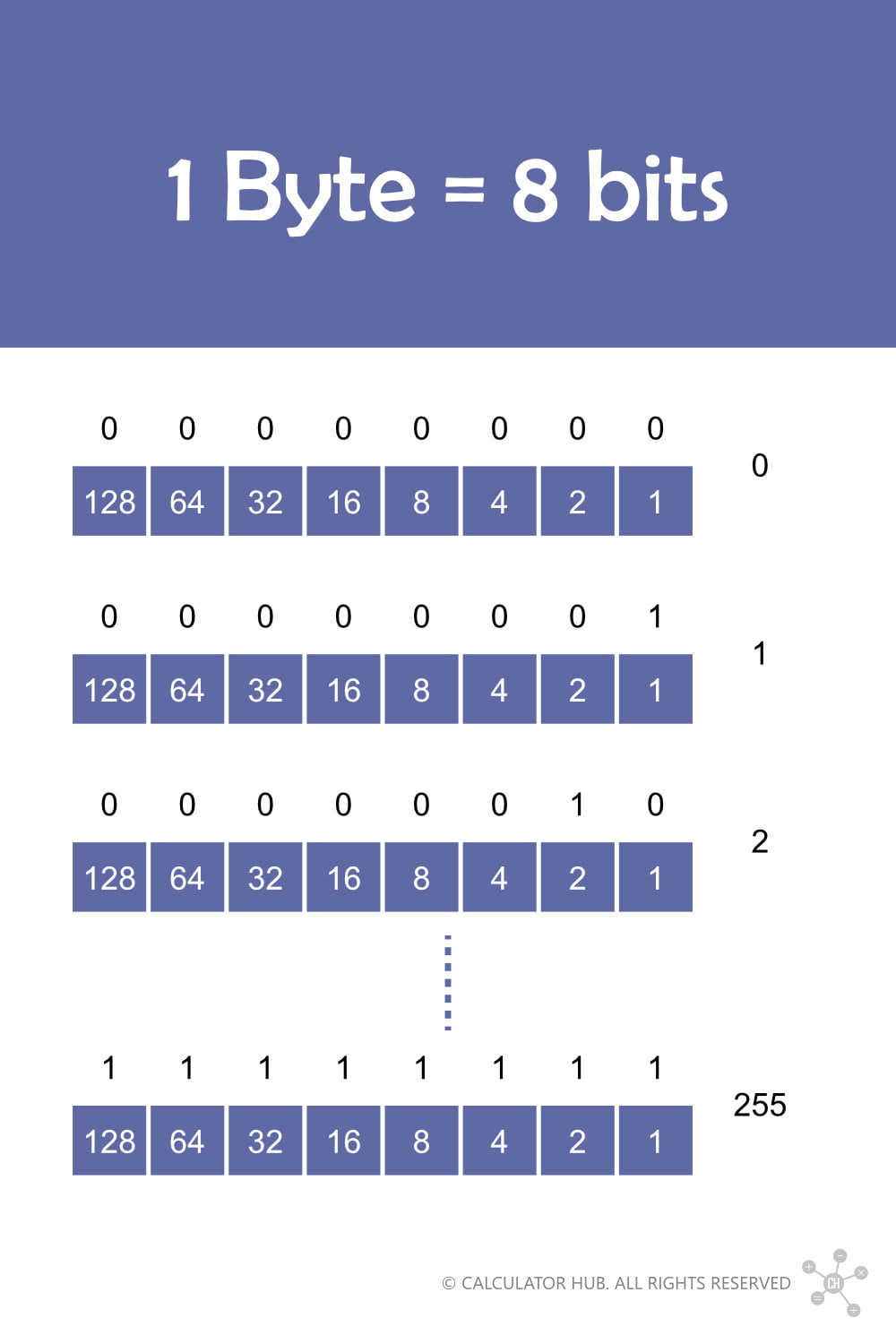
With such amount of potential values, a byte can represent many fundamental digital information, including characters in the ASCII (American Standard Code for Information Interchange) encoding system, numbers, color components, network packets, control code, and other information that fits in a byte.
What is a Terabyte (TB)?
A terabyte (TB) is a unit of measurement for data storage used to measure hard drive capacity, files, or memory that are very large, typically between one trillion and one quadrillion bytes.
It has symbols or abbreviations such as TB, Tbyte, TiB, or Tibyte.
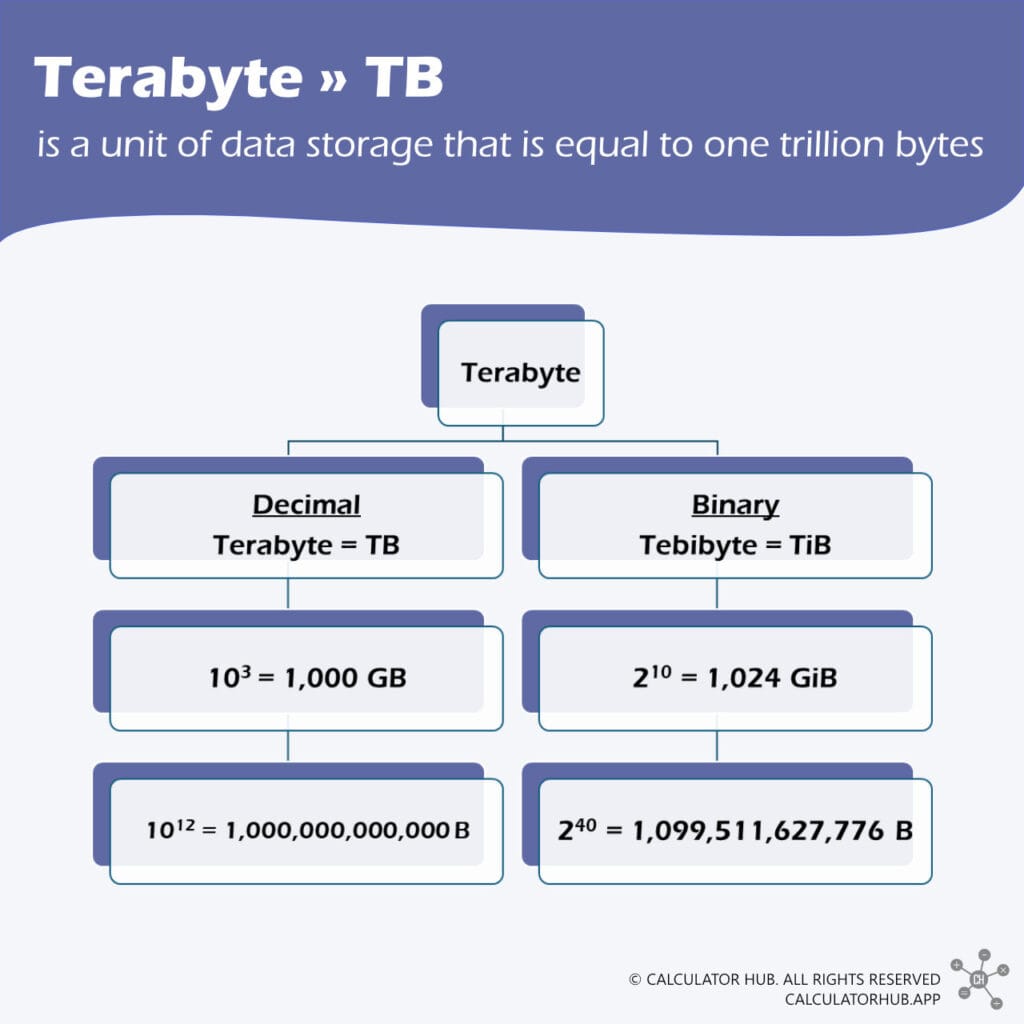
When using SI prefixes[1], which are based on powers of 10, a terabyte (TB) equals 1,000,000,000,000 bytes.
1 TB = 103 GB = 1,000 GB1 TB = 109 KB = 1,000,000,000 KB1 TB = 1012 B = 1,000,000,000,000 B
When using IEC binary prefixes[2], which are based on powers of 2, a terabyte (TB) equals 1,099,511,627,776 bytes.
1 TiB = 210 GiB = 1,024 GiB1 TiB = 230 KiB = 1,073,741,824 KiB1 TiB = 240 B = 1,099,511,627,776 B
TB to Byte formula
Let’s take a closer look at the conversion formula so you can carry out these conversions independently, whether using a calculator or doing it manually with pencil and paper.
Using decimal (SI) prefixes
The table below shows all the SI prefixes and the associated symbols, multipliers, and colloquials.
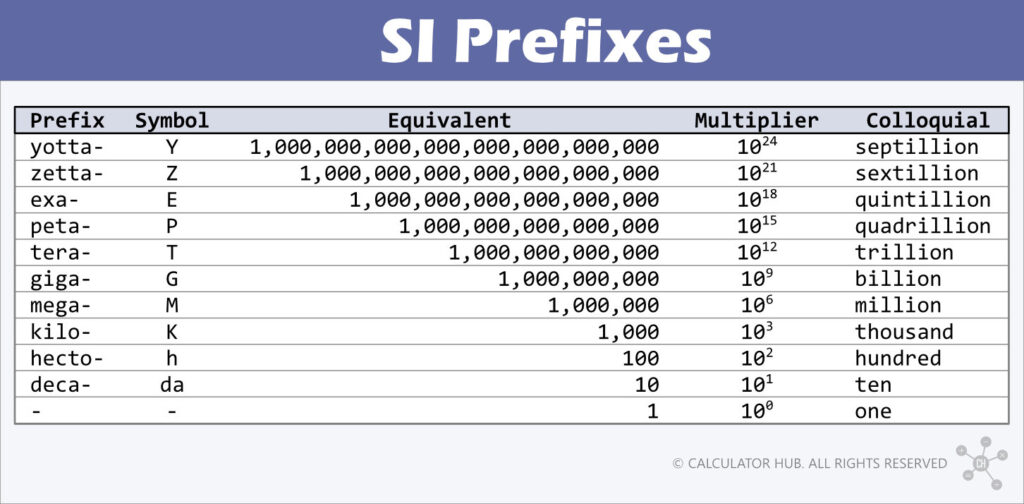
The tera- prefix in the International System of Units (SI) represents a multiplier of 1012 (1,000,000,000,000).
So, to convert from terabytes to bytes, multiply the number of terabytes (NTB) by 1,000,000,000,000.
NB = NTB × 1012 = NTB × 1,000,000,000,000
Or remember the TB-to-B conversion factor: 1 TB = 1012 = 1,000,000,000,000 B
Using binary (IEC) prefixes
The IEC defined a set of binary prefixes to avoid confusion with the decimal-based SI prefixes. The table below shows all the binary prefixes, associated symbols, and their multipliers.
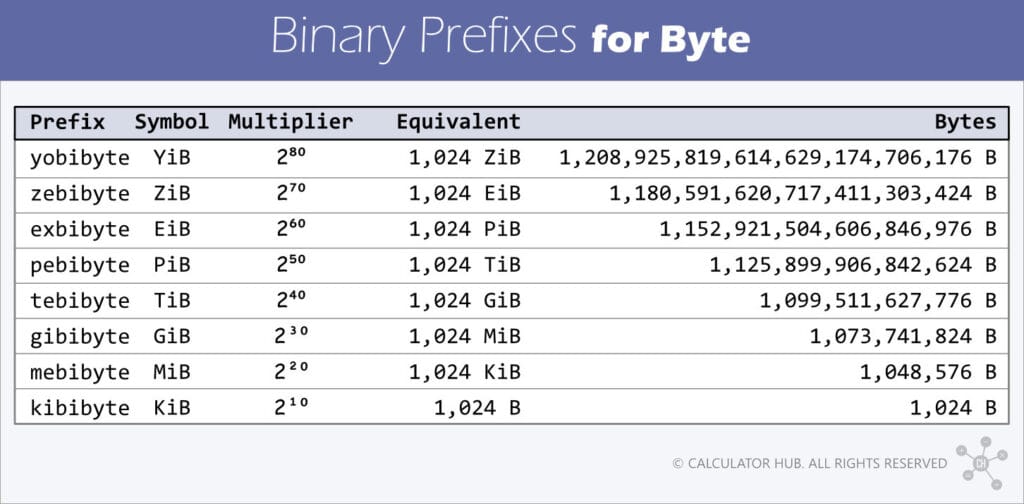
The tebi- prefix in the International Electrotechnical Commission (IEC) represents a multiplier of 240 (1,099,511,627,776).
So, to convert from tebibytes to bytes, multiply the number of tebibytes (NTiB) by 1,099,511,627,776.
NB = NTiB × 240 = NTiB × 1,099,511,627,776
Or remember the TiB-to-B conversion factor: 1 TiB = 240 = 1,099,511,627,776 B
Examples
Now, let's take a look at an example that illustrates the calculations required to convert from terabytes to bytes (TB to B).
Example
Imagine you’ve just purchased a new external hard drive advertised as having 2 TB of storage! 💾 Excited to back up all your photos, videos, and documents, you connect it to your computer, only to find that the available storage is less than 2 TB. You see something like 1.81 TB instead. 😮
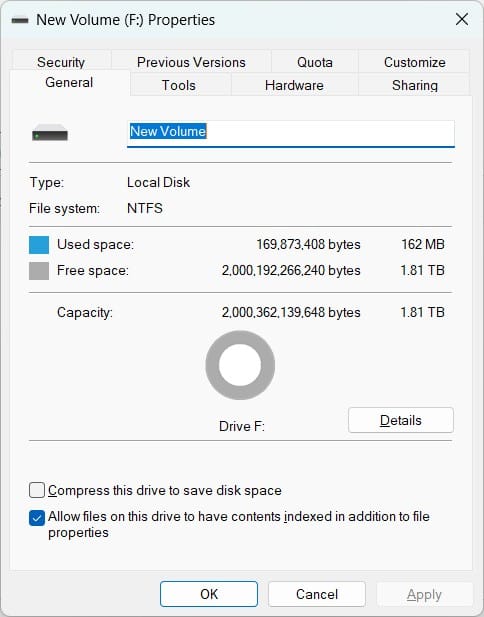
You realize that operating systems report storage size using binary units, which may differ from the manufacturer’s claims. 🔍 To understand this difference, you convert two terabytes into bytes using decimal and binary standards to determine which one the manufacturer employed. 📊💡
Using decimal (SI) prefixes
Since 1 terabyte (TB) equals 1012 (1,000,000,000,000) bytes, we can convert 2 TB to bytes by using the following formula:
So, the 2 TB hard drive, when expressed in decimal units, is equivalent to 2,000,000,000,000 bytes.
Alternatively, you can use our calculator by entering 2 into the TB box, and you instantly get the storage value in bytes, in this case, 2,000,000,000,000 B.
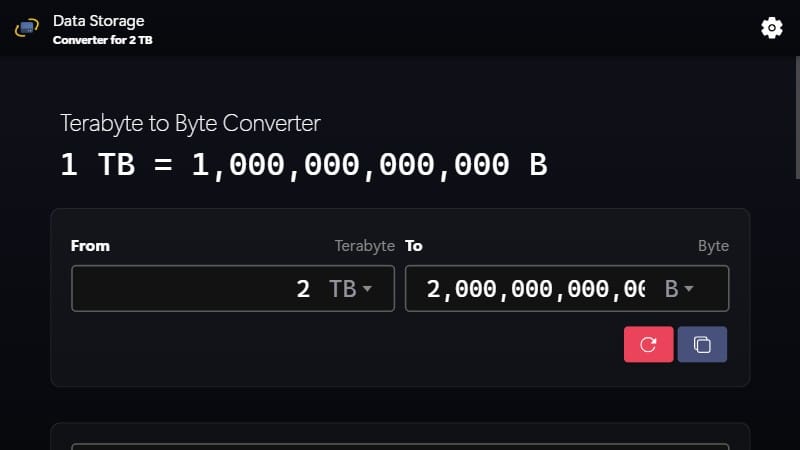
Using binary (IEC) prefixes
Since 1 tebibyte (TiB) equals 240 (1,099,511,627,776) bytes, we can convert 2 tebibytes to bytes by using the following formula:
So, the 2 TB hard drive, when expressed in binary units, is equivalent to 2,199,023,255,552 bytes.
Alternatively, you can use our calculator by entering 2 into the From box, choose TiB from the From unit box, and you instantly get the storage value in bytes, in this case, 2,199,023,255,552 B.
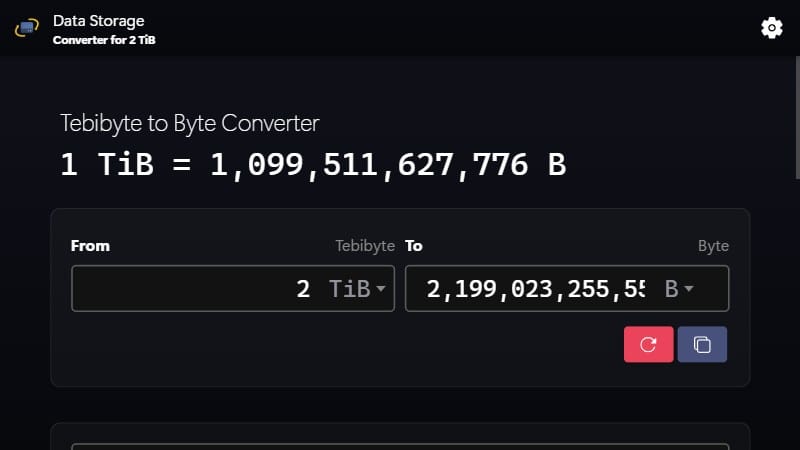
From your calculations, you can assume that the manufacturer used decimal (SI) prefixes[3] to determine the hard drive’s capacity. Therefore, the actual capacity of the 2 TB hard drive is 2,000,000,000,000 bytes.
Using our calculator, you can convert the 2 trillion bytes to tebibytes that match the exact capacity reported by the operating system, approximately 1.81 TiB.
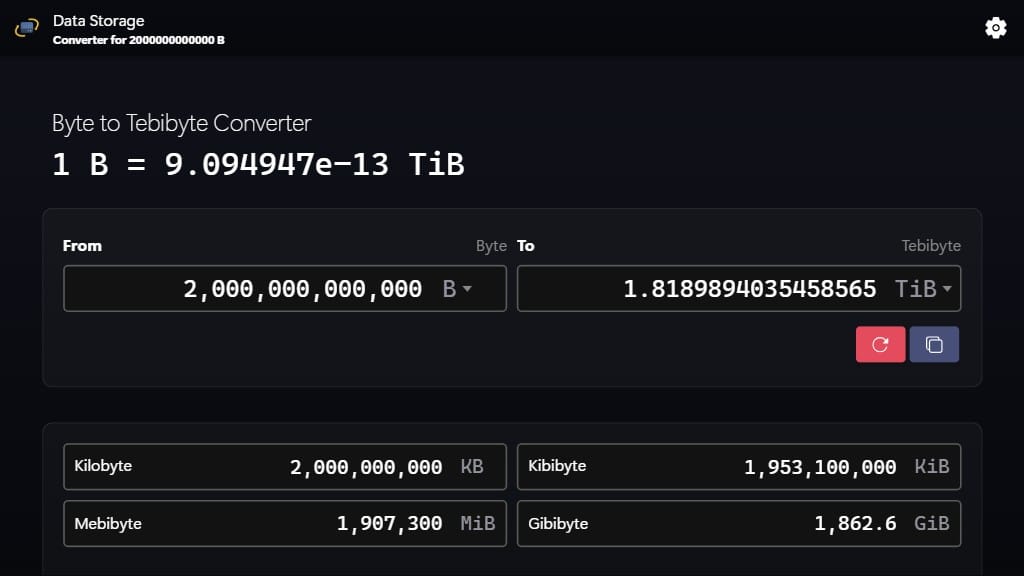
TB to B conversion table
The conversion table below provides a handy reference for converting data storage capacity from terabytes (TB) to bytes (B). It covers a range from 0.1 TB to 1,000 TB, allowing for easy and quick conversions between these units of measurement.
Decimal (SI) prefixes
| Terabytes | Bytes |
|---|---|
| 0.1 TB | 100,000,000,000 B |
| 0.5 TB | 500,000,000,000 B |
| 1 TB | 1,000,000,000,000 B |
| 2 TB | 2,000,000,000,000 B |
| 4 TB | 4,000,000,000,000 B |
| 5 TB | 5,000,000,000,000 B |
| 10 TB | 10,000,000,000,000 B |
| 20 TB | 20,000,000,000,000 B |
| 30 TB | 30,000,000,000,000 B |
| 40 TB | 40,000,000,000,000 B |
| 50 TB | 50,000,000,000,000 B |
| 60 TB | 60,000,000,000,000 B |
| 70 TB | 70,000,000,000,000 B |
| 80 TB | 80,000,000,000,000 B |
| 90 TB | 90,000,000,000,000 B |
| 100 TB | 100,000,000,000,000 B |
| 200 TB | 200,000,000,000,000 B |
| 500 TB | 500,000,000,000,000 B |
| 800 TB | 800,000,000,000,000 B |
| 1,000 TB | 1,000,000,000,000,000 B |
Binary (IEC) prefixes
| Tebibytes | Bytes |
|---|---|
| 0.1 TiB | 109,951,162,777.6 B |
| 0.5 TiB | 549,755,813,888 B |
| 1 TiB | 1,099,511,627,776 B |
| 2 TiB | 2,199,023,255,552 B |
| 4 TiB | 4,398,046,511,104 B |
| 5 TiB | 5,497,558,138,880 B |
| 10 TiB | 10,995,116,277,760 B |
| 20 TiB | 21,990,232,555,520 B |
| 30 TiB | 32,985,348,833,280 B |
| 40 TiB | 43,980,465,111,040 B |
| 50 TiB | 54,975,581,388,800 B |
| 60 TiB | 65,970,697,666,560 B |
| 70 TiB | 76,965,813,944,320 B |
| 80 TiB | 87,960,930,222,080 B |
| 90 TiB | 98,956,046,499,840 B |
| 100 TiB | 109,951,162,777,600 B |
| 200 TiB | 219,902,325,555,200 B |
| 500 TiB | 549,755,813,888,000 B |
| 800 TiB | 879,609,302,220,800 B |
| 1,000 TiB | 1,099,511,627,776,000 B |
FAQs
Is 1 byte or 1 terabyte larger?
A terabyte (TB) is a trillion times bigger than a byte (B). Here are the relationships between the units:
Decimal prefixes
1 TB = 1012 = 1,000,000,000,000 B1 B = 10-12 = 1 ÷ 1,000,000,000,000 = 0.000000000001 TB
Binary prefixes
1 TiB = 240 = 1,099,511,627,776 B1 B = 2-40 = 1 ÷ 1,099,511,627,776 ≈ 9e-13 TiB
How to convert from terabyte to byte?
To convert data storage from terabytes (TB) to bytes (B), follow these simple steps based on the standard you are using:
- Write down the data storage value in
terabytes (TB).
Decimal (SI) prefixes
- Multiply it by the value of a
TB-to-Bconversion factor:1012or1,000,000,000,000. - The result from multiplication is the value of the data storage in
bytes (B).
Binary (IEC) prefixes
- multiply it by the value of a
TiB-to-Bconversion factor:240or1,099,511,627,776. - The result from multiplication is the value of the data storage in
bytes (B).
You now know how to convert data storage capacity from terabytes (TB) to bytes (B). You can quickly use our calculator to convert between the data storage units to save time for future calculations.
For further understanding, check our data storage converter page to learn more about the differences between decimal and binary units of data storage.

